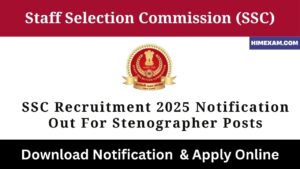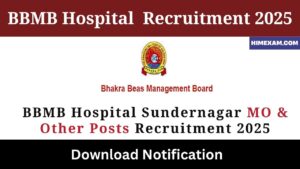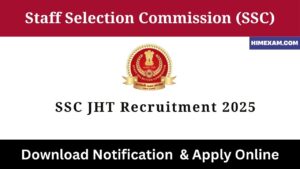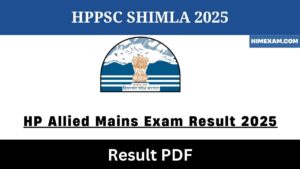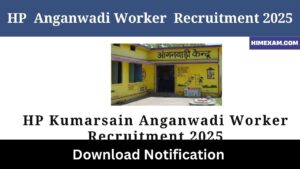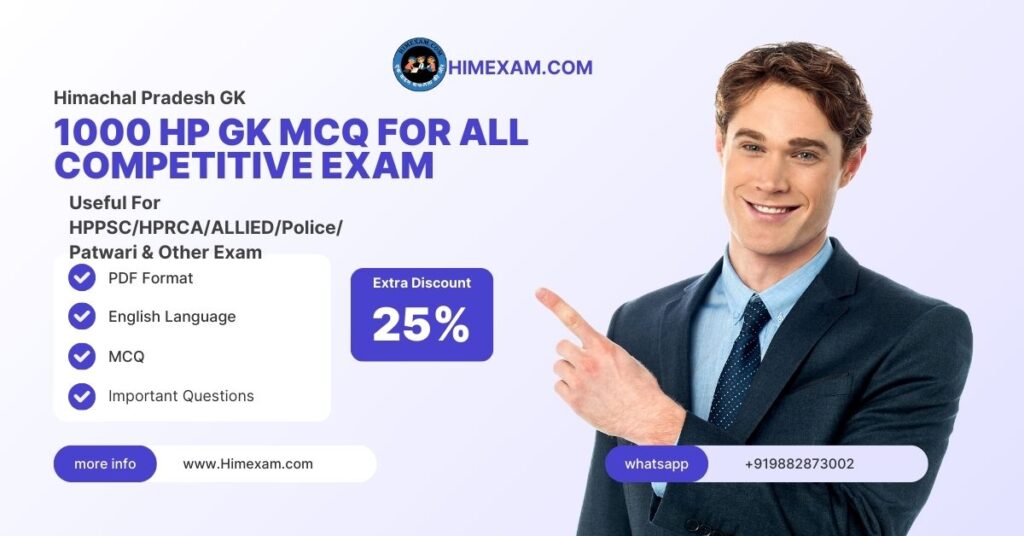Computer Fundamentals MCQ Question Answer
||Computer Fundamentals MCQ Question Answer||Computer Fundamentals Question and Answers||
1. The word ‘computer’ has been derived from which of the following language?
(1) Greek
(2) English
(3) Hindi
(4) Latin
2. Input, output and processing devices grouped together represent a(n)
(1) mobile device
(2) information processing cycle
(3) circuit board
(4) computer system
3. Which of the following is the correct order of the four major functions of a computer?
(1) Process, Output, Input, Storage
(2) Input, Output, Process, Storage
(3) Process, Storage, Input, Output
(4) Input, Process, Output, Storage
4. Collecting the data and converting it into information is called
(1) processing
(2) compiling
(3) importing
(4) exporting
5. Computer cannot perform
(1) input
(2) output
(3) thinking
(4) processing
6. A computer cannot perform which of the following functions?
(1) Addition
(2) Subtraction
(3) Bake a cake
(4) Division
7. Part number, description and number of parts ordered are examples of
(1) control
(2) output
(3) processing
(4) feedback
8. Benefit(s) of computer is/are
(1) very fast and can store huge amount of data
(2) provide accurate output either input is correct or not
(3) think about the processing
(4) All of the above
9. A collection of unprocessed items is
(1) information
(2) data
(3) memory
(4) reports
(5) None of these
10. Which among the following cycle consists of input, processing, output and storage as its constituents?
(1) Processing
(2) Output
(3) Input
(4) Storage
(5) Data
11. ……… is data that has been organised and presented in a meaningful fashion.
(1) A process
(2) Software
(3) Storage
(4) Information
(5) Data
12. Data or information used to run the computer is called
(1) hardware
(2) CPU
(3) peripheral
(4) None of these
13. The steps and tasks needed to process data, such as responses to questions or clicking an icon, are called
(1) instructions
(2) the operating system
(3) application software
(4) the system unit
(5) the hardware unit
14. The earliest calculating device is
(1) calculator
(2) abacus
(3) difference engine
(4) analytical engine
15. Abacus can perform
(1) addition
(2) subtraction
(3) multiplication
(4) Both (1) and (2)
16. The Napier’s technology used for calculation is called
(1) Naptologia
(2) Vibologia
(3) Semiconductor
(4) Rabdologia
17. Pascaline is also known as
(1) abacus
(2) adding machine
(3) division machine
(4) difference machine
18. Punched cards were first introduced by
(1) Powers
(2) Pascal
(3) Jacquard
(4) Herman Hollerith
19. Punched card is also called
A. Hollerith card
B. Video Card
C. Sound Card
D. Accelerator Card
Codes
(1) B
(2) C
(3) A
(4) D
20. Which of the following is known as father of computer?
(1) Dennis Ritchie
(2) Napier
(3) Charles Babbage
(4) Alan Turing
21. Who is known as the father of the modern computer?
(1) Charles Babbage
(2) Alan Turing
(3) Blaise Pascal
(4) Jordan Murn
22. Analytical engine developed by
(1) Blaise Pascal
(2) Charles Babbage
(3) Dennis Ritchie
(4) Alan Turing
23. The analytical engine developed during first generation of computers used ……… as a memory unit. (1) RAM
(2) floppies
(3) cards
(4) counter wheels
||Computer Fundamentals MCQ Question Answer||Computer Fundamentals Question and Answers||
24. Tabulating machine was the first electromechanical machine developed by
(1) Herman Hollerith
(2) Howard Aiken
(3) Blaise Pascal
(4) John Napier
25. Who among the following created the Electronic Discrete Variable Automatic Computer (EDVAC) with a memory to hold both, a stored program as well as data?
(1) Thomas H Flowers
(2) Arthur Samuel
(3) Bletchley Park
(4) John Von Neumann
26. The first computer which provides storage is
(1) EDSAC
(2) EDVAC
(3) MARK-I
(4) ACE
27. Name the first general purpose electronic computer.
(1) ADVAC
(2) ADSAC
(3) UNIVAC
(4) EDVAC
28. Computer size was very large in
(1) first generation
(2) second generation
(3) third generation
(4) fourth generation
29. First generation computers were based on
(1) transistors
(2) conductors
(3) ICs
(4) vacuum tubes
30. Computer built before the first generation computer was
(1) mechanical
(2) electromechanical
(3) electrical
(4) electronics
31. First generation computers used ……… language(s).
(1) machine
(2) assembly
(3) Both (1) and (2)
(4) high level
32. The second generation of computers was witnessed in the years from
(1) 1940-1956
(2) 1963-1972
(3) 1957-1962
(4) 1973-Present
33. Second generation computers can be characterised largely by their use of
(1) integrated circuits
(2) vaccum tubes
(3) microprocessors
(4) transistors
34. Speed of first generation computer was in
(1) nano seconds
(2) milli seconds
(3) nano-milli seconds
(4) micro seconds
35. Time sharing became possible in ……… generation of computers.
(1) first
(2) second
(3) third
(4) fourth
36. Third generation of computers was witnessed in the years from……
(1) 1940-1956
(2) 1963-1972
(3) 1957-1962
(4) 1973-Present Introduction to Computer
37. Integrated Circuits or ICs were started to be used from which generation of computers?
(1) First generation
(2) Second generation
(3) Third generation
(4) Fourth generation
(5) Fifth generation
38. Chip is a common nickname for a(n)
(1) transistor
(2) resistor
(3) integrated circuit
(4) semiconductor
(5) None of these
39. Integrated Circuit (IC) or chips used in computers are made with
(1) copper
(2) aluminium
(3) gold
(4) silicon
(5) silver
40. Who developed integrated chip?
(1) Robert Nayak
(2) C Babbage
(3) JS Kilby
(4) CV Raman
41. A complete electronic circuit with transistors and other electronic components on a small silicon chip is called a(n)
(1) workstation
(2) CPU
(3) magnetic disc
(4) integrated circuit
42. PCs are considered fourth generation and contain
(1) information
(2) data
(3) vacuum tubes
(4) microprocessors
(5) transistors
43. Fifth generation computers do not have
(1) speech recognition
(2) artificial intelligence
(3) very large scale integration
(4) vacuum tubes
44. Match the following.
List I List II
A First generation 1. Transistor
B Second generation 2. VLSI microprocessor
C Third generation 3. Vacuum tube
D Fourth generation 4. Integrated circuit
Codes A B C D
(1) 3 4 1 2
(2) 3 1 4 2
(3) 3 1 2 4
(4) 1 3 4 2
||Computer Fundamentals MCQ Question Answer||Computer Fundamentals Question and Answers||
45. Small and cheap computers built into several home appliances are of which type?
(1) Mainframes
(2) Mini computers
(3) Micro computers
(4) None of these
46. Desktop and personal computers are also known as
(1) supercomputers
(2) servers
(3) mainframes
(4) microcomputers
47. Computers that are portable and convenient to use for users who travel, are known as
(1) supercomputers
(2) minicomputers
(3) mainframe computers
(4) laptops
48. Which of the following uses a handheld operating system?
(1) A supercomputer
(2) A personal computer
(3) A laptop
(4) A PDA
49. Palmtop computer is also known as
(1) personal computer
(2) notebook computer
(3) tablet PC
(4) handheld computer
50. Which of the following is a small microprocessor based computer designed to be used by one person at a time?
(1) Netbook
(2) Supercomputer
(3) All-in-one
(4) Notebook
(5) Personal computer
51. Which of the following options correctly expresses the meaning of the term ‘PCs’?
(1) Independent computers for all working staff.
(2) Personal computers widely available to individual workers with which they can access information from layer systems and increase their personal productivity.
(3) Packed computers system formed by joining together of various computer terminals.
(4) Computer manufactured by the Pentium Company.
(5) None of the above
52. Desktop computers, laptop computers, tablets and smartphones are different types of
(1) supercomputers
(2) mainframe computers
(3) microcomputers
(4) minicomputers
53. In the context of digital computer, which of the following pairs of digits is referred to as binary code?
(1) 3 and 4
(2) 0 and 1
(3) 2 and 3
(4) 1 and 2
54. A central computer that holds collection of data and programs for many PCs, workstations and other computers is a
(1) supercomputer
(2) minicomputer
(3) laptop
(4) server
55. First mini computer was
(1) PDP-8
(2) ENIAC
(3) UNISAC
(4) EDVAC
56. Which of the following is generally costlier?
(1) Server
(2) Notebook computer
(3) Personal computer
(4) Laptop computer
(5) Mainframe
57. The user generally applies ……… to access mainframe or supercomputer
. (1) terminal
(2) node
(3) desktop
(4) handheld
58. First computer of India is
(1) PARAM
(2) Siddhartha
(3) IBM-370
(4) CRAY-1
59. Where was the first computer in India installed?
(1) Tata Institute of Fundamental Research (TIFR), Mumbai
(2) Indian Statistical Institute (ISI), Kolkata
(3) Compunational Research Laboratory (CRL), Pune
(4) Indian Railway, New Delhi
60. First supercomputer developed in India is
(1) PARAM
(2) CRAY-1
(3) PARAM ISHAN
(4) EPRAM
61. Pratyush is …… fastest supercomputer in the world.
(1) first
(2) second
(3) third
(4) fourth
62. Example of super computer is
(1) CRAY-2
(2) CRAY XMP-24
(3) Tianhe-2
(4) All of these
63. Which of the following is a supercomputer developed by India?
(1) Param Yuva 2
(2) Onshape
(3) Venngage
(4) Pixir
64. In 1991, India’s first indigenous supercomputer named …… was developed by Vijay Bhatkar
(1) Prayas 3000
(2) Prayog 2000
(3) Param 8000
(4) Pragati 5000
65. Who among the following is called the father of supercomputing?
(1) Ken Thompson
(2) Alan Perlis
(3) Seymour Cray
(4) Vint Gerf
66. India’s fastest and first multi-petaflops supercomputer named Pratyush was unveiled at
(1) Indian Space Research Organisation
(2) Indian Institute of Science, Bangalore
(3) Indian Institute of Tropical Meteorology, Pune
(4) Indian Institute of Technology, New Delhi
67. Choose the odd one out.
(1) Microcomputer
(2) Minicomputer
(3) Supercomputer
(4) Digital computer
68. A hybrid computer is the one having the combined properties of
(1) super and microcomputers
(2) mini and microcomputers
(3) analog and digital computers
(4) super and mini computers
69. Computer system which do not require any storage device?
A. Analog
B. Digital
C. Hybrid
D. Third generation computer
Codes
(1) B
(2) A
(3) D
(4) C
||Computer Fundamentals MCQ Question Answer||Computer Fundamentals Question and Answers||
70. The …… computer is the most common type of computer. It is used to process information with quantities usually using the binary number system.
(1) Hybrid
(2) Digital
(3) Analog
(4) Complex
71. Calculator works on which type of computer’s work method?
(1) Hybrid computer
(2) Analog computer
(3) Digital computer
(4) None of the above
72. Which of the following computer is mainly related to convert analog output into digital form?
(1) Digital computer
(2) Analog computer
(3) Hybrid computer
(4) Mainframe computer
73. Which of the following is not the example of special purpose computer?
(1) Automatic aircraft landing
(2) Word processor
(3) Multimedia computer
(4) All of the above
74. Which type of computer is used in automatic aircraft landing?
(1) General purpose computer
(2) Supercomputer
(3) Special purpose computer
(4) Microcomputer
75. Which of the following is the smallest and fastest computer imitating brain working?
(1) Supercomputer
(2) Quantum computer
(3) Param-10000
(4) IBM chips
(5) None of the above
Answer Sheet:-1. (4) 2. (4) 3. (4) 4. (1) 5. (3) 6. (3) 7. (3) 8. (1) 9. (2) 10. (5) 11. (4) 12. (4) 13. (1) 14. (2) 15. (4) 16. (4) 17. (2) 18. (3) 19. (3) 20. (3) 21. (2) 22. (2) 23. (4) 24. (1) 25. (4) 26. (1) 27. (3) 28. (1) 29. (4) 30. (2) 31. (1) 32. (3) 33. (4) 34. (2) 35. (2) 36. (2) 37. (3) 38. (3) 39. (4) 40. (3) 41. (4) 42. (4) 43. (4) 44. (2) 45. (3) 46. (4) 47. (4) 48. (4) 49. (4) 50. (5) 51. (2) 52. (3) 53. (2) 54. (4) 55. (1) 56. (5) 57. (2) 58. (2) 59. (2) 60. (1) 61. (4) 62. (4) 63. (1) 64. (3) 65. (3) 66. (3) 67. (4) 68. (3) 69. (2) 70. (2) 71. (3) 72. (3) 73. (2) 74. (3) 75. (2)
Read More: – Himachal Pradesh General Knowledge



